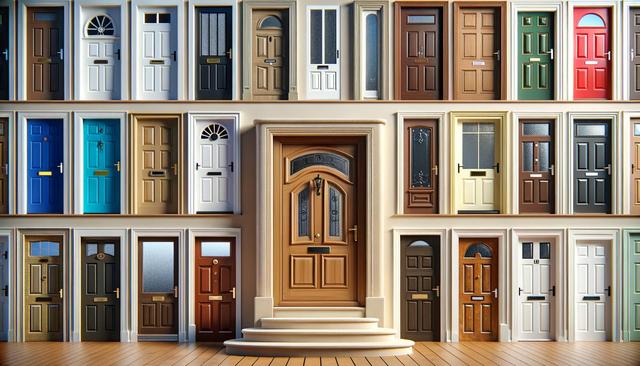Understanding the Factors That Influence Front Door Prices
Front door prices can vary widely depending on a number of factors, including material, design complexity, and installation requirements. Homeowners often find that the biggest cost determinant is the type of material used. For example, wood doors tend to be more expensive due to their classic appeal and craftsmanship, while steel and fiberglass doors are generally more affordable and offer different benefits in terms of durability and maintenance.
Other elements that influence price include:
- Custom designs or dimensions
- Glass inserts or decorative panels
- Security features like reinforced frames and smart locks
- Labor and installation costs
In general, a standard entry-level door without many enhancements may cost a few hundred dollars, while premium models with advanced features and custom finishes can reach into the thousands. Understanding your specific needs and setting a realistic budget are essential first steps in the door selection process.
Materials: Comparing Your Front Door Options
The material you choose for your front door will not only affect the price, but also its durability, insulation properties, and visual appeal. Here are some commonly available options:
- Wood: Known for its natural beauty and traditional appeal, wood is a popular choice for high-end homes. However, it requires regular maintenance to resist warping and moisture damage.
- Steel: A practical and secure option, steel doors are relatively low-cost and offer strong resistance to forced entry. They can dent more easily than other materials, but are energy-efficient and low-maintenance.
- Fiberglass: Fiberglass doors are highly durable and mimic the look of wood without the upkeep. They resist dents and rust, making them suitable for harsh climates.
- Aluminum: Less common, but lightweight and corrosion-resistant. These doors are often used for modern or minimalist designs.
Each material comes with its own set of pros and cons. Consider your climate, maintenance preferences, and design goals when selecting the most suitable option for your home.
Finding a Style That Complements Your Home
Front doors are a key architectural element and contribute significantly to your home’s curb appeal. Choosing a style that harmonizes with your home’s exterior is just as important as selecting the right material. From rustic farmhouse doors to sleek contemporary panels, the options are abundant.
Common design styles include:
- Traditional: Often feature raised panels, sidelights, and classic hardware
- Modern: Clean lines, minimalistic hardware, and often use of glass
- Craftsman: Known for their square panels and artistic glass inserts
- Colonial: Symmetrical design with paneled patterns and neutral tones
Color also plays a vital role. Whether you choose a bold red for a statement or a subtle gray to blend with surroundings, the finish can enhance the personality of your home. Many manufacturers offer custom colors and stains to meet individual preferences.
Installation and Additional Features to Consider
Once you’ve selected the door, proper installation is crucial for performance and longevity. A poorly installed door can lead to drafts, water damage, and security risks. Professional installation is often recommended, especially for heavier doors or those with complex framing requirements.
Additional features to keep in mind include:
- Weatherstripping: Helps seal gaps and improve energy efficiency
- Smart locks: Offer convenience and added security
- Glass inserts: Add natural light but may affect privacy and insulation
- Storm doors: Provide extra protection and ventilation options
These enhancements can add to the cost but often provide long-term value in terms of comfort, safety, and energy savings. Be sure to factor these into your overall front door budget.
Where to Shop and How to Compare Options
Front doors can be purchased from a variety of sources, including home improvement stores, specialized door retailers, and local contractors. Each channel has its own benefits. For instance, large retailers often carry a wide range of ready-to-install doors, while specialty shops may offer more customization and expert guidance.
When comparing options, consider the following:
- Warranty coverage and service support
- Delivery and installation timelines
- Customer reviews and reputation of the supplier
- Availability of matching hardware and accessories
Requesting quotes from multiple providers can help you identify the most cost-effective solution for your needs. Don’t forget to ask about installation services and whether they are included in the listed price or charged separately.
Conclusion: Making an Informed Investment
Choosing a new front door is a meaningful investment in your home’s security, efficiency, and visual appeal. By understanding the factors that influence front door prices, exploring different materials and styles, and considering practical features and installation options, homeowners can make well-informed decisions that align with their budget and design goals. Take the time to compare options, consult with professionals, and prioritize both aesthetics and function to find a door that truly enhances your home.


